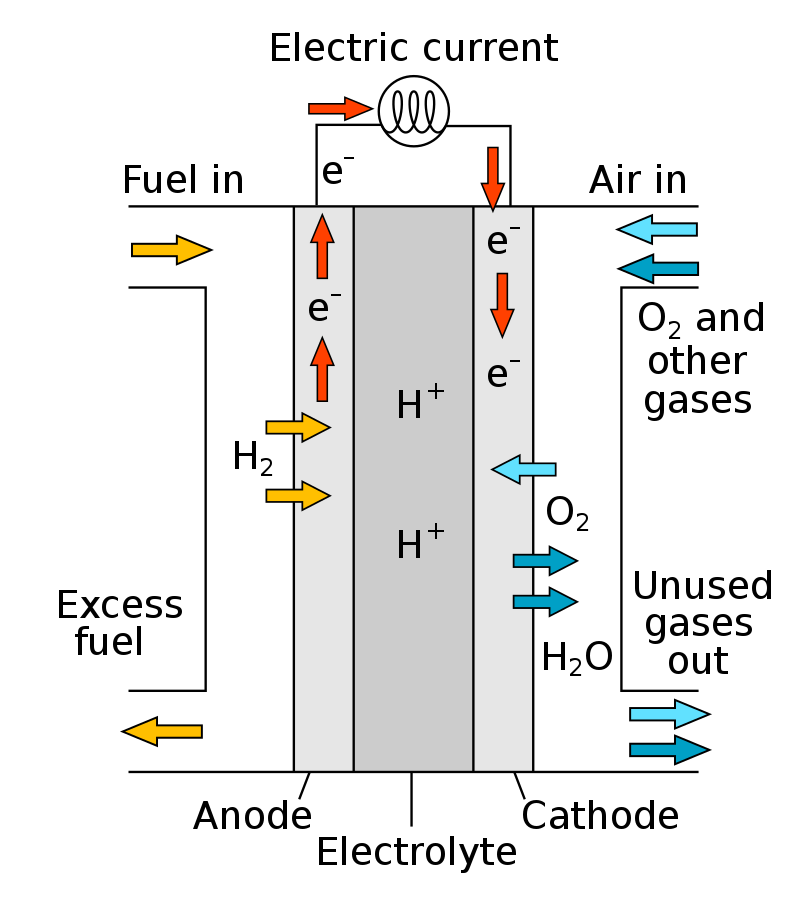- Solar energy blog
- Why Hydrogen Fuel is fundamental to clean energy targets
Why Hydrogen Fuel is fundamental to clean energy targets


Laura Rodríguez
Territory Manager Oceania & Nordics
Laura is a renewable and software industry sales professional, currently working at RatedPower as Territory Manager Oceania & Nordics. With a background in International Business and International Trade, Laura previously worked in the business strategy area in various companies as well as as a market analyst for the Government of Spain in Australia.

Content
We’re confident in saying that hydrogen fuel will play a key role in the clean energy transition. Green hydrogen, produced from renewable energy, can provide the solution to the low-carbon needs of energy-intensive industries like chemical refining, manufacturing, construction and long-haul transport.

Governments around the world are devising hydrogen strategies to provide incentives for investment and position themselves at the forefront of technological development. Investments in hydrogen fuel averaged around $1.5 billion per year in 2018-2020, and could grow at around 7% annually, according to BloombergNEF.
Let’s take a closer look at how the industry is developing and what’s in store for the future.
How hydrogen works
A lightweight gas, hydrogen is an abundant resource present in water and hydrocarbons. After all, the chemical symbol for water, H2O, denotes that it is made up of two parts hydrogen to one part water.
Whilst abundant, using hydrogen as a fuel source is not without its challenges. In order to do so, the hydrogen atoms must be extracted from water or fossil fuels using heat and chemical reactions. Hydrogen is extracted from fossil fuels using a steam reforming process, from biomass using microbial processes, or from water using electrolysis.
The steam reforming method produces carbon dioxide, contributing to polluting carbon emissions. But electrolysis, which passes an electrical current through a tank of water to split the hydrogen and oxygen molecules, is a much cleaner process.
The importance of hydrogen as a clean energy source lies in the fact that it can be stored and transported. This means that it can be used as a fuel to balance intermittent renewable power generation. It can also be injected into natural gas networks or used to produce hydrogen fuel cells.
What are hydrogen fuel cells?
Fuel cells are devices that use an electrochemical reaction to generate electricity, heat and water. Like a battery, a fuel cell contains an anode, a cathode and an electrolyte.
Hydrogen travels through the anode while oxygen flows through the cathode. Hydrogen splits into electrons and protons at the anode. The protons travel through the electrolyte. The electrons move through a circuit to generate an electrical current along with excess heat. The protons, electrons, and oxygen combine in the cathode, where they produce water.

With only heat and water as by-products, fuel cells do not produce harmful emissions and contain no toxic materials like batteries or fossil fuels. Fuel cells offer high energy density and efficiency that can provide the answer to fuel-intensive applications like heavy machinery, shipping and aircraft, which require more energy than batteries can provide.
Hydrogen production at a turning point
Hydrogen is extracted from fossil fuels using a steam reforming process, from biomass using microbial processes, or from water using electrolysis.
The consumption of hydrogen fuel is well established in the oil and chemical refining industries. Around three-quarters of the 70 million tons of annual global hydrogen production comes from natural gas, accounting for around 6% of global gas consumption, according to the International Energy Agency. Gas prices account for the bulk of the production cost, making it cheaper to produce hydrogen in regions with lower gas prices, such as the Middle East and Russia.
As well as currently using fossil fuel as the main source, hydrogen production is highly energy-intensive. But the sharp drop in costs for renewable electricity generation is driving increased interest in producing electrolytic hydrogen, marking a major turning point for its widespread adoption as a clean energy solution.
The source of hydrogen production is critical if it is to contribute to decarbonization. Hydrogen produced from natural gas generates carbon emissions and is referred to as “grey hydrogen”, while the production of “blue hydrogen” captures carbon emissions for storage or reuse. “Green hydrogen” generated from wind and solar electricity produces no carbon emissions.

Prospects for green hydrogen use
The automotive industry is looking to hydrogen fuel cells as an alternative to lithium-ion batteries for electric vehicles. Unlike lithium, hydrogen produces only water as a by-product and fuel cells offer higher energy density, allowing vehicles to travel further before needing refueling. Project developers are looking at ways to bring down the cost of fuel cells and establish a delivery infrastructure.
A KPMG survey in 2020 found that 84% of automotive executives expect fuel cell vehicles will experience their breakthrough in industrial transportation, up by 5% from 2019. Hydrogen could provide a viable clean fuel for the aviation and shipping industries, where batteries are not a practical option.
Using hydrogen in air transport could reduce the aviation industry’s climate impact by 75-90%, a European study found, adding that the industry could switch to hydrogen fuel for short-haul flights in 8-15 years.

There is also the potential to use hydrogen in gas networks or fuel cells to provide heating for residential and commercial buildings, and to use fuel cells for renewable energy storage.
While hydrogen extraction is currently an expensive process, the cost of production from renewable energy sources could decline by 30% by 2030 according to the IEA, as renewable costs continue to fall and mass production of hydrogen equipment benefits from economies of scale.
Pros and cons of hydrogen
Hydrogen offers several important benefits as a fuel of the future:
Low emissions. Green hydrogen uses renewable energy to separate the hydrogen atoms, and hydrogen fuel cells emit only heat and water as by-products.
High efficiency. Hydrogen fuel cells offer between 40-60% energy efficiency, compared with around 25% efficiency for internal combustion engines.
Scalable. Delivery of hydrogen fuel can be scaled to meet the needs of the application, whether electric vehicles, stationary power for industrial buildings, or commercial fleets.
Reliable. Fuel cell technology is robust and durable in tough conditions, from harsh climates to industrial environments.
However, the industry must find ways to deal with the disadvantages of using hydrogen:
Storage and transport challenges. Hydrogen is difficult to store and transport safely. Hydrogen has almost four times the volume of natural gas and must be compressed to 700 times normal atmospheric pressure, or refrigerated to -23°C.
High cost. The production process and storage requirements for hydrogen make it more expensive than fossil fuels and batteries.
Infrastructure conversion. Hydrogen can make metal brittle and hydrogen atoms that are under pressure can pass through steel, making it difficult to convert natural gas pipes and appliances to handle hydrogen as a fuel.
Where is hydrogen being used today?
Hydrogen is gathering strong momentum thanks to the shift in attitudes towards decarbonization among governments and regulators, investors, and consumers. As of January 2021:
More than 30 countries had released hydrogen strategy roadmaps
There are more than 200 hydrogen projects under development around the world
Governments have committed more than $70 billion in public funding
Around 55% of the 228 projects under development are in Europe, Australia, Japan, South Korea, China, and the US also announcing multiple projects. The projects focus on large-scale industries such as refineries, power, methanol, steel, and feedstocks, as well as transport and infrastructure.

Europe
In its hydrogen roadmap released in July 2020, the EU set out its objective to install at least 6GW of renewable hydrogen electrolyzers in the region and produce up to 1 million tons of renewable hydrogen in 2020-2024.
This would help decarbonize existing hydrogen production used in the chemical sector and enable the adoption of hydrogen use in new applications such as other industrial processes and heavy-duty transport. In the second phase, the EU plans to reach 40GW of electrolyzer capacity by 2030.
There are more than 2,000 hydrogen-fuelled cars on the road across Europe and more than 100 fuelling stations. The first phase of the Hydrogen Mobility Europe (H2ME) project between 2016 and 2020 deployed 630 hydrogen fuel cell electric vehicles in 10 countries and installed 37 new refueling stations in eight countries.
United States
In the US, there were around 46 hydrogen refueling stations as of October 2020, almost all of them in California. There were also 161 fuel cells generating a total of 250MW of electricity at 108 facilities around the country, according to the Energy Information Administration (EIA).
Australia and Asia
Australia, Japan, and South Korea are among the countries accelerating their hydrogen strategies, leading to new developments in the push to establish hydrogen infrastructure. The strategies go hand-in-hand with the countries’ push to expand their renewable generation capacity.
In Australia, hydrogen electrolyzer and storage system manufacturer Lavo signed an agreement in February with Springfield City in Queensland to build the country’s first hydrogen fuel cell production line by early 2022.
South Korea’s Hyundai Motor plans to start mass production of a hydrogen-fuelled heavy-duty truck in August. It will ship 140 vehicles to Switzerland by the end of the year and plans to sell them to more European countries in 2022.
In Japan, Panasonic announced a pilot project in May to combine 500kW of hydrogen fuel cell capacity with 570kW of solar power generation and 1.1 MWh of lithium-ion batteries. The project is scheduled for completion in the spring of 2022 and aims to demonstrate the use of hydrogen and photovoltaic generators to meet 100% of the electricity needs of a business.
Such innovative projects show how hydrogen can be used in tandem with solar power to enable energy transition
If you want to learn more
Latest stories
Related posts
Technology and engineering
Outsmarting congestion: How efficient solar design helps navigate Nordic grid limits
Learn how Nordic operators and solar developers are adjusting to tighter grid conditions and how policy and design decisions are keeping projects on track.
Updated 16 DEC, 25

Technology and engineering
The rise of ultra-thin perovskite solar cells
Learn about Japan’s $1.5B initiative to commercialize ultra-thin, flexible perovskite solar cells and how it could transform the solar landscape globally.
Updated 30 SEP, 25

Technology and engineering
The green hydrogen boom in LatAm
Latin America is emerging as a green hydrogen leader. Learn how LatAm countries are leveraging solar and wind power to drive green hydrogen production.
Updated 22 JUL, 25

- RatedPower
- Solar energy blog
- Why Hydrogen Fuel is fundamental to clean energy targets
 Watch a demo
Watch a demo Ask our AI Product Expert
Ask our AI Product Expert
